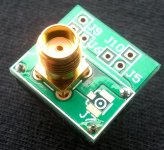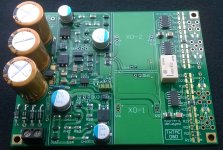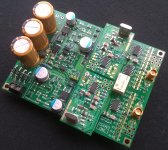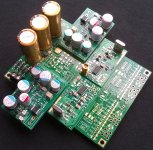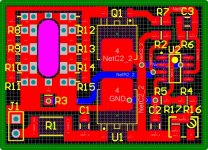Interest List SC-cut Crystals from Laptech
- andrea_mori: 2 x 11.2896 MHz + 2 x 22.5792 MHz + 2 x 24.576 MHz + 1 x 45.1584 Mhz + 1 x 49.152 MHz
- Acko: 1 x 45.1584 MHz + 1 x 49.152MHz
- QSerraTico_Tico: 2 x 11.2896 MHz
- iancanada: 1 x 22.5792 MHz + 1 x 24.576 MHz + 1 x 45.1584 MHz + 1 x 49.152MHz
- babaudio : 2 x 22.5792 MHz + 2 x 24.576 MHz
- Clsidxxl: 1 x 22.5792 MHz + 1 x 24.576 MHz
- lindamar: 1 x 22.5792 MHz + 1 x 24.576 MHz + 1 x 45.1584 MHz + 1 x 49.152MHz
- tagheuer: 1 x 45.1584 MHz + 1 x 49.152MHz
- palmito: 1 x 45.1584 MHz + 1 x 49.152MHz
- damohpi: 1x 11.2896 Mhz (or 2x if reqd.)
- Naimster: 1 x 22.5792 MHz + 1 x 24.576 MHz
- noizas: 1 x 11.2896 MHz + 1 x 22.5792 MHz + 1 x 45.1584 MHz + 1 x 49.152 MHz
- Phi: 1 x 22.5792 MHz + 1 x 24.576 MHz (Added title )
- stijn001: 1 x 45.1584 MHz + 1 x 49.152MHz
- ambrosia168: 1 x 11.2896 Mhz + 1 x 22.5792 MHz + 1 x 24.576 MHz
- andrea_mori: 2 x 11.2896 MHz + 2 x 22.5792 MHz + 2 x 24.576 MHz + 1 x 45.1584 Mhz + 1 x 49.152 MHz
- Acko: 1 x 45.1584 MHz + 1 x 49.152MHz
- QSerraTico_Tico: 2 x 11.2896 MHz
- iancanada: 1 x 22.5792 MHz + 1 x 24.576 MHz + 1 x 45.1584 MHz + 1 x 49.152MHz
- babaudio : 2 x 22.5792 MHz + 2 x 24.576 MHz
- Clsidxxl: 1 x 22.5792 MHz + 1 x 24.576 MHz
- lindamar: 1 x 22.5792 MHz + 1 x 24.576 MHz + 1 x 45.1584 MHz + 1 x 49.152MHz
- tagheuer: 1 x 45.1584 MHz + 1 x 49.152MHz
- palmito: 1 x 45.1584 MHz + 1 x 49.152MHz
- damohpi: 1x 11.2896 Mhz (or 2x if reqd.)
- Naimster: 1 x 22.5792 MHz + 1 x 24.576 MHz
- noizas: 1 x 11.2896 MHz + 1 x 22.5792 MHz + 1 x 45.1584 MHz + 1 x 49.152 MHz
- Phi: 1 x 22.5792 MHz + 1 x 24.576 MHz (Added title )
- stijn001: 1 x 45.1584 MHz + 1 x 49.152MHz
- ambrosia168: 1 x 11.2896 Mhz + 1 x 22.5792 MHz + 1 x 24.576 MHz
Interest List SC-cut Crystals from Laptech
- andrea_mori: 2 x 11.2896 MHz + 2 x 22.5792 MHz + 2 x 24.576 MHz + 1 x 45.1584 Mhz + 1 x 49.152 MHz
- Acko: 1 x 45.1584 MHz + 1 x 49.152MHz
- QSerraTico_Tico: 2 x 11.2896 MHz
- iancanada: 1 x 22.5792 MHz + 1 x 24.576 MHz + 1 x 45.1584 MHz + 1 x 49.152MHz
- babaudio : 2 x 22.5792 MHz + 2 x 24.576 MHz
- Clsidxxl: 1 x 22.5792 MHz + 1 x 24.576 MHz
- lindamar: 1 x 22.5792 MHz + 1 x 24.576 MHz + 1 x 45.1584 MHz + 1 x 49.152MHz
- tagheuer: 1 x 45.1584 MHz + 1 x 49.152MHz
- palmito: 1 x 45.1584 MHz + 1 x 49.152MHz
- damohpi: 1x 11.2896 Mhz (or 2x if reqd.)
- Naimster: 1 x 22.5792 MHz + 1 x 24.576 MHz
- noizas: 1 x 11.2896 MHz + 1 x 22.5792 MHz + 1 x 45.1584 MHz + 1 x 49.152 MHz
- Phi: 1 x 22.5792 MHz + 1 x 24.576 MHz (Added title )
- stijn001: 1 x 45.1584 MHz + 1 x 49.152MHz
- ambrosia168: 1 x 11.2896 Mhz + 1 x 22.5792 MHz + 1 x 24.576
- flowerpot: 1 x 45.1584 MHz + 1 x 49.152MHz
- andrea_mori: 2 x 11.2896 MHz + 2 x 22.5792 MHz + 2 x 24.576 MHz + 1 x 45.1584 Mhz + 1 x 49.152 MHz
- Acko: 1 x 45.1584 MHz + 1 x 49.152MHz
- QSerraTico_Tico: 2 x 11.2896 MHz
- iancanada: 1 x 22.5792 MHz + 1 x 24.576 MHz + 1 x 45.1584 MHz + 1 x 49.152MHz
- babaudio : 2 x 22.5792 MHz + 2 x 24.576 MHz
- Clsidxxl: 1 x 22.5792 MHz + 1 x 24.576 MHz
- lindamar: 1 x 22.5792 MHz + 1 x 24.576 MHz + 1 x 45.1584 MHz + 1 x 49.152MHz
- tagheuer: 1 x 45.1584 MHz + 1 x 49.152MHz
- palmito: 1 x 45.1584 MHz + 1 x 49.152MHz
- damohpi: 1x 11.2896 Mhz (or 2x if reqd.)
- Naimster: 1 x 22.5792 MHz + 1 x 24.576 MHz
- noizas: 1 x 11.2896 MHz + 1 x 22.5792 MHz + 1 x 45.1584 MHz + 1 x 49.152 MHz
- Phi: 1 x 22.5792 MHz + 1 x 24.576 MHz (Added title )
- stijn001: 1 x 45.1584 MHz + 1 x 49.152MHz
- ambrosia168: 1 x 11.2896 Mhz + 1 x 22.5792 MHz + 1 x 24.576
- flowerpot: 1 x 45.1584 MHz + 1 x 49.152MHz
Finished boards
While waiting for crystals delivery, here attached some pictures of the finished boards.
DIL adapter, fundamental and overtone oscillators, daughter board and final assembly.
While waiting for crystals delivery, here attached some pictures of the finished boards.
DIL adapter, fundamental and overtone oscillators, daughter board and final assembly.
Attachments
Very nice board Andrea,Congratulations.
you recommend a transformer 17 volts for TWTMC board,but transformer 17 volts are hard to find,an alternative?🙂
What is the 3 pins 'Pulse'
you recommend a transformer 17 volts for TWTMC board,but transformer 17 volts are hard to find,an alternative?🙂
What is the 3 pins 'Pulse'
Very nice board Andrea,Congratulations.
you recommend a transformer 17 volts for TWTMC board,but transformer 17 volts are hard to find,an alternative?🙂
What is the 3 pins 'Pulse'
Hammond 229A34 parallel wired from Mouser
229A34 Hammond Manufacturing | Mouser
18Vac transformer works also as well.
Pulse pins are provided to switch between the two oscillator, drived with a >15 ms pulse signal. This logic is not needed if you are using TWTMC with Ian's Dual XO board.
Daughter board using external regulators
http://www.diyaudio.com/forums/power-supplies/212476-well-regulated-power-supply-14.html#post4242428
http://www.diyaudio.com/forums/power-supplies/212476-well-regulated-power-supply-14.html#post4242428
Attachments
Interest List SC-cut Crystals from Laptech
- andrea_mori: 2 x 11.2896 MHz + 2 x 22.5792 MHz + 2 x 24.576 MHz + 1 x 45.1584 Mhz + 1 x 49.152 MHz
- Acko: 1 x 45.1584 MHz + 1 x 49.152MHz
- QSerraTico_Tico: 2 x 11.2896 MHz
- iancanada: 1 x 22.5792 MHz + 1 x 24.576 MHz + 1 x 45.1584 MHz + 1 x 49.152MHz
- babaudio : 2 x 22.5792 MHz + 2 x 24.576 MHz
- Clsidxxl: 1 x 22.5792 MHz + 1 x 24.576 MHz
- lindamar: 1 x 22.5792 MHz + 1 x 24.576 MHz + 1 x 45.1584 MHz + 1 x 49.152MHz
- tagheuer: 1 x 45.1584 MHz + 1 x 49.152MHz
- palmito: 1 x 45.1584 MHz + 1 x 49.152MHz
- damohpi: 1x 11.2896 Mhz (or 2x if reqd.)
- Naimster: 1 x 22.5792 MHz + 1 x 24.576 MHz
- noizas: 1 x 11.2896 MHz + 1 x 22.5792 MHz + 1 x 45.1584 MHz + 1 x 49.152 MHz
- Phi: 1 x 22.5792 MHz + 1 x 24.576 MHz (Added title )
- stijn001: 1 x 45.1584 MHz + 1 x 49.152MHz
- ambrosia168: 1 x 11.2896 Mhz + 1 x 22.5792 MHz + 1 x 24.576
- flowerpot: 1 x 45.1584 MHz + 1 x 49.152MHz
- jdlvfr: 2 x 11.2896 Mhz
- andrea_mori: 2 x 11.2896 MHz + 2 x 22.5792 MHz + 2 x 24.576 MHz + 1 x 45.1584 Mhz + 1 x 49.152 MHz
- Acko: 1 x 45.1584 MHz + 1 x 49.152MHz
- QSerraTico_Tico: 2 x 11.2896 MHz
- iancanada: 1 x 22.5792 MHz + 1 x 24.576 MHz + 1 x 45.1584 MHz + 1 x 49.152MHz
- babaudio : 2 x 22.5792 MHz + 2 x 24.576 MHz
- Clsidxxl: 1 x 22.5792 MHz + 1 x 24.576 MHz
- lindamar: 1 x 22.5792 MHz + 1 x 24.576 MHz + 1 x 45.1584 MHz + 1 x 49.152MHz
- tagheuer: 1 x 45.1584 MHz + 1 x 49.152MHz
- palmito: 1 x 45.1584 MHz + 1 x 49.152MHz
- damohpi: 1x 11.2896 Mhz (or 2x if reqd.)
- Naimster: 1 x 22.5792 MHz + 1 x 24.576 MHz
- noizas: 1 x 11.2896 MHz + 1 x 22.5792 MHz + 1 x 45.1584 MHz + 1 x 49.152 MHz
- Phi: 1 x 22.5792 MHz + 1 x 24.576 MHz (Added title )
- stijn001: 1 x 45.1584 MHz + 1 x 49.152MHz
- ambrosia168: 1 x 11.2896 Mhz + 1 x 22.5792 MHz + 1 x 24.576
- flowerpot: 1 x 45.1584 MHz + 1 x 49.152MHz
- jdlvfr: 2 x 11.2896 Mhz
Interest List SC-cut Crystals from Laptech
- andrea_mori: 2 x 11.2896 MHz + 2 x 22.5792 MHz + 2 x 24.576 MHz + 1 x 45.1584 Mhz + 1 x 49.152 MHz
- Acko: 1 x 45.1584 MHz + 1 x 49.152MHz
- QSerraTico_Tico: 2 x 11.2896 MHz
- iancanada: 1 x 22.5792 MHz + 1 x 24.576 MHz + 1 x 45.1584 MHz + 1 x 49.152MHz
- babaudio : 2 x 22.5792 MHz + 2 x 24.576 MHz
- Clsidxxl: 1 x 22.5792 MHz + 1 x 24.576 MHz
- lindamar: 1 x 22.5792 MHz + 1 x 24.576 MHz + 1 x 45.1584 MHz + 1 x 49.152MHz
- tagheuer: 1 x 45.1584 MHz + 1 x 49.152MHz
- palmito: 1 x 45.1584 MHz + 1 x 49.152MHz
- damohpi: 1x 11.2896 Mhz (or 2x if reqd.)
- Naimster: 1 x 22.5792 MHz + 1 x 24.576 MHz
- noizas: 1 x 11.2896 MHz + 1 x 22.5792 MHz + 1 x 45.1584 MHz + 1 x 49.152 MHz
- Phi: 1 x 22.5792 MHz + 1 x 24.576 MHz (Added title )
- stijn001: 1 x 45.1584 MHz + 1 x 49.152MHz
- ambrosia168: 1 x 11.2896 Mhz + 1 x 22.5792 MHz + 1 x 24.576
- flowerpot: 1 x 45.1584 MHz + 1 x 49.152MHz
- jdlvfr: 2 x 11.2896 Mhz
- tods: 1 x 22.5792 MHz + 1 x 24.576 MHz + 1 x 45.1584 MHz + 1 x 49.152MHz
- andrea_mori: 2 x 11.2896 MHz + 2 x 22.5792 MHz + 2 x 24.576 MHz + 1 x 45.1584 Mhz + 1 x 49.152 MHz
- Acko: 1 x 45.1584 MHz + 1 x 49.152MHz
- QSerraTico_Tico: 2 x 11.2896 MHz
- iancanada: 1 x 22.5792 MHz + 1 x 24.576 MHz + 1 x 45.1584 MHz + 1 x 49.152MHz
- babaudio : 2 x 22.5792 MHz + 2 x 24.576 MHz
- Clsidxxl: 1 x 22.5792 MHz + 1 x 24.576 MHz
- lindamar: 1 x 22.5792 MHz + 1 x 24.576 MHz + 1 x 45.1584 MHz + 1 x 49.152MHz
- tagheuer: 1 x 45.1584 MHz + 1 x 49.152MHz
- palmito: 1 x 45.1584 MHz + 1 x 49.152MHz
- damohpi: 1x 11.2896 Mhz (or 2x if reqd.)
- Naimster: 1 x 22.5792 MHz + 1 x 24.576 MHz
- noizas: 1 x 11.2896 MHz + 1 x 22.5792 MHz + 1 x 45.1584 MHz + 1 x 49.152 MHz
- Phi: 1 x 22.5792 MHz + 1 x 24.576 MHz (Added title )
- stijn001: 1 x 45.1584 MHz + 1 x 49.152MHz
- ambrosia168: 1 x 11.2896 Mhz + 1 x 22.5792 MHz + 1 x 24.576
- flowerpot: 1 x 45.1584 MHz + 1 x 49.152MHz
- jdlvfr: 2 x 11.2896 Mhz
- tods: 1 x 22.5792 MHz + 1 x 24.576 MHz + 1 x 45.1584 MHz + 1 x 49.152MHz
- andrea_mori: 2 x 11.2896 MHz + 2 x 22.5792 MHz + 2 x 24.576 MHz + 1 x 45.1584 Mhz + 1 x 49.152 MHz
- Acko: 1 x 45.1584 MHz + 1 x 49.152MHz
- QSerraTico_Tico: 2 x 11.2896 MHz
- iancanada: 1 x 22.5792 MHz + 1 x 24.576 MHz + 1 x 45.1584 MHz + 1 x 49.152MHz
- babaudio : 2 x 22.5792 MHz + 2 x 24.576 MHz
- Clsidxxl: 1 x 22.5792 MHz + 1 x 24.576 MHz
- lindamar: 1 x 22.5792 MHz + 1 x 24.576 MHz + 1 x 45.1584 MHz + 1 x 49.152MHz
- tagheuer: 1 x 45.1584 MHz + 1 x 49.152MHz
- palmito: 1 x 45.1584 MHz + 1 x 49.152MHz
- damohpi: 1x 11.2896 Mhz (or 2x if reqd.)
- Naimster: 1 x 22.5792 MHz + 1 x 24.576 MHz
- noizas: 1 x 11.2896 MHz + 1 x 22.5792 MHz + 1 x 45.1584 MHz + 1 x 49.152 MHz
- Phi: 1 x 22.5792 MHz + 1 x 24.576 MHz (Added title )
- stijn001: 1 x 45.1584 MHz + 1 x 49.152MHz
- ambrosia168: 1 x 11.2896 Mhz + 1 x 22.5792 MHz + 1 x 24.576
- flowerpot: 1 x 45.1584 MHz + 1 x 49.152MHz
- jdlvfr: 2 x 11.2896 Mhz
- tods: 1 x 22.5792 MHz + 1 x 24.576 MHz + 1 x 45.1584 MHz + 1 x 49.152MHz
- wlowes: 1 x 45.1584 MHz + 1 x 49.152MHz
- Acko: 1 x 45.1584 MHz + 1 x 49.152MHz
- QSerraTico_Tico: 2 x 11.2896 MHz
- iancanada: 1 x 22.5792 MHz + 1 x 24.576 MHz + 1 x 45.1584 MHz + 1 x 49.152MHz
- babaudio : 2 x 22.5792 MHz + 2 x 24.576 MHz
- Clsidxxl: 1 x 22.5792 MHz + 1 x 24.576 MHz
- lindamar: 1 x 22.5792 MHz + 1 x 24.576 MHz + 1 x 45.1584 MHz + 1 x 49.152MHz
- tagheuer: 1 x 45.1584 MHz + 1 x 49.152MHz
- palmito: 1 x 45.1584 MHz + 1 x 49.152MHz
- damohpi: 1x 11.2896 Mhz (or 2x if reqd.)
- Naimster: 1 x 22.5792 MHz + 1 x 24.576 MHz
- noizas: 1 x 11.2896 MHz + 1 x 22.5792 MHz + 1 x 45.1584 MHz + 1 x 49.152 MHz
- Phi: 1 x 22.5792 MHz + 1 x 24.576 MHz (Added title )
- stijn001: 1 x 45.1584 MHz + 1 x 49.152MHz
- ambrosia168: 1 x 11.2896 Mhz + 1 x 22.5792 MHz + 1 x 24.576
- flowerpot: 1 x 45.1584 MHz + 1 x 49.152MHz
- jdlvfr: 2 x 11.2896 Mhz
- tods: 1 x 22.5792 MHz + 1 x 24.576 MHz + 1 x 45.1584 MHz + 1 x 49.152MHz
- wlowes: 1 x 45.1584 MHz + 1 x 49.152MHz
Last edited:
Slicer
Attached a part of an interesting document about the sine wave to TTL conversion.
As you can see in table 3.1 the C-MOS logic approach shows the best performance in phase noise test, much better than high speed comparator and also better than ECL converter.
Attached a part of an interesting document about the sine wave to TTL conversion.
As you can see in table 3.1 the C-MOS logic approach shows the best performance in phase noise test, much better than high speed comparator and also better than ECL converter.
Attachments
Those performance numbers should also put into perspective what is possible to achieve. Getting better than -100 dB at 1 Hz and -130 dB at 10 Hz probably won't happen with the available technologies. Not even if you use space shuttle tiles.
A quick back of the envelope calculation suggests about 70 fS random jitter with the kinds of numbers shown. (Good calculators here: https://www.jitterlabs.com/support/calculators/) I suspect that would be well below anything possible with a 24 bit DAC in otherwise perfect conditions. I still have not seen a real 24 bit DAC that runs at audio frequencies.
A quick back of the envelope calculation suggests about 70 fS random jitter with the kinds of numbers shown. (Good calculators here: https://www.jitterlabs.com/support/calculators/) I suspect that would be well below anything possible with a 24 bit DAC in otherwise perfect conditions. I still have not seen a real 24 bit DAC that runs at audio frequencies.
Modern Stuff
Hi Andrea,
The document you provided is a little outdated.
There is better logic now: tinyLogic, VHS and what not.
Also comparators have been a lot improved since the LT1016.
Just check with Analog Devices, Linear Technology, Maxim etc.

Attached a part of an interesting document about the sine wave to TTL conversion.
As you can see in table 3.1 the C-MOS logic approach shows the best performance in phase noise test, much better than high speed comparator and also better than ECL converter.
Hi Andrea,
The document you provided is a little outdated.
There is better logic now: tinyLogic, VHS and what not.
Also comparators have been a lot improved since the LT1016.
Just check with Analog Devices, Linear Technology, Maxim etc.

Hi Andrea,
The document you provided is a little outdated.
There is better logic now: tinyLogic, VHS and what not.
Also comparators have been a lot improved since the LT1016.
Just check with Analog Devices, Linear Technology, Maxim etc.

As Demian said those performance from a picogate are not simple to beat.
If you are looking for faster logic device you can use Potato logic, as specified in the BOM.
I don't see any reason to test other comparators, since the distance against the '04 is 30dBc or more. That's confirmed in the phase noise plot showed in post #5.
Furthermore, I don't own a R&S FSUP to do the comparative test, so I think it would be better to follow a well tested way that ensures good performance, like the picogate.
SC-cut crystal oven
This is a simple oven to be used with SC-cut crystals.
Board size is 1" x 1.4", compliant with TWTMC oscillators.
The crystal fits into the PCB slot. It should be soldered to the top and the bottom of the PCB.
I'm also looking for a copper clamp to solder to the PCB. In this case the crystal will fit into the copper clamp, without any soldering.
Components values have to be adjusted for the right temperature.
The TWTMC-C Colpitts-Clapp oscillator is not the ideal for SC-cut crystal, but the higher Q of the crystal could help anyway.
Next step I'll start designing the Butler two transistors and the Driscoll oscillators, more suitable to work with SC-cut crystals.
This is a simple oven to be used with SC-cut crystals.
Board size is 1" x 1.4", compliant with TWTMC oscillators.
The crystal fits into the PCB slot. It should be soldered to the top and the bottom of the PCB.
I'm also looking for a copper clamp to solder to the PCB. In this case the crystal will fit into the copper clamp, without any soldering.
Components values have to be adjusted for the right temperature.
The TWTMC-C Colpitts-Clapp oscillator is not the ideal for SC-cut crystal, but the higher Q of the crystal could help anyway.
Next step I'll start designing the Butler two transistors and the Driscoll oscillators, more suitable to work with SC-cut crystals.
Attachments
Laptech crystals arrived
Crystals have just arrived, all with individual test (attached).
Let me give all a try to check they start at the right frequency , and to define the final component values for each frequency.
Then I'll begin the shipment to all the members.
Follow the list of the members who required assembly service, I'll ship their items to Phil (korben69) who provides the service:
esgigt
thorstenlarsen
mcluxun
noizas
Clsidxxl
hirez69
zenelectro
Ryssen
JethroTull
triodehunter
tods
Lindamar
I ask Phil to confirm the acknowledgment of the service for the above members.
Crystals have just arrived, all with individual test (attached).
Let me give all a try to check they start at the right frequency , and to define the final component values for each frequency.
Then I'll begin the shipment to all the members.
Follow the list of the members who required assembly service, I'll ship their items to Phil (korben69) who provides the service:
esgigt
thorstenlarsen
mcluxun
noizas
Clsidxxl
hirez69
zenelectro
Ryssen
JethroTull
triodehunter
tods
Lindamar
I ask Phil to confirm the acknowledgment of the service for the above members.
Attachments
-
98_304.pdf417.8 KB · Views: 132
-
90_3168.pdf421.8 KB · Views: 142
-
49_152.pdf467.5 KB · Views: 132
-
45_1584.pdf481.1 KB · Views: 122
-
24_576.pdf466.9 KB · Views: 174
-
22_5792.pdf477.1 KB · Views: 126
-
11_2896.pdf479.8 KB · Views: 184
-
5_6448.pdf410.4 KB · Views: 151
-
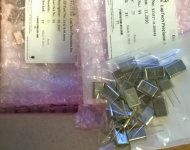 Crystals_Box.jpg236.9 KB · Views: 840
Crystals_Box.jpg236.9 KB · Views: 840
Hello Andrea,
Thank you so much for all your sharing and great efforts,
Is there a BOM somewhere in relation to the boards you provide with the XOs ?
regards
Thank you so much for all your sharing and great efforts,
Is there a BOM somewhere in relation to the boards you provide with the XOs ?
regards
Hello Andrea,
Thank you so much for all your sharing and great efforts,
Is there a BOM somewhere in relation to the boards you provide with the XOs ?
regards
As soon as I will have checked all the crystals in the oscillator circuit to define the final component values for each frequency, next weekend, I'll post the final BOM and the assembly guide for each board.
Each crystal comes with a number written on the metal can, so you can refer to the testing sheet I have posted to know the specs of the crystals you will receive.
- Status
- Not open for further replies.
- Home
- Source & Line
- Digital Line Level
- The Well Tempered Master Clock - Building a low phase noise/jitter crystal oscillator
